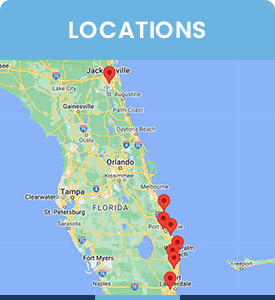Body Dysmorphic Disorder (BPD) Treatment Clinic Q&A
The ultimate goal of body dysmorphic disorder treatment is to recognize and rectify unhealthy thought patterns, fostering the development of flexible and realistic beliefs. Discover the benefits of body dysmorphic disorder treatment today and meet our team of healthcare professionals. Body dysmorphic disorder treatment is available at Psychiatry of the Palm Beaches. For more information, contact us or book an appointment online. Visit Psychiatry of the Palm Beaches serving Jacksonville, Boynton Beach, Palm Beach Gardens, Stuart, Royal Palm Beach, Port St. Lucie, Melbourne, Fort Lauderdale, and Jupiter, FL.




Table of Contents:
What is body dysmorphic disorder?
What are the signs of body dysmorphic disorder?
What age does body dysmorphic disorder start?
Who is prone to body dysmorphia?
What are the treatment goals for body dysmorphic disorder?
Body dysmorphic disorder (BDD) is a mental health condition characterized by obsessive preoccupation with one or more perceived defects or flaws in one’s appearance, even though these flaws may be minor or not visible to others. This intense focus on physical appearance leads to feelings of embarrassment, shame, and anxiety, often resulting in avoidance of social situations.
Individuals with BDD constantly and excessively concentrate on their appearance and body image, engaging in repetitive behaviors such as frequent mirror-checking, grooming, or seeking reassurance from others, sometimes for prolonged periods each day. The perceived flaw and the repetitive behaviors cause significant distress and significantly impact their ability to function in daily life.
In an attempt to address their perceived flaw, individuals with BDD may undergo numerous cosmetic procedures. While these interventions may temporarily provide satisfaction or reduce distress, the anxiety often returns, prompting a cycle of seeking other ways to “fix” the perceived flaw. Body dysmorphic disorder can significantly impair an individual’s overall well-being and quality of life.
BDD can arise at different life stages, with a common occurrence during adolescence or early adulthood. Studies and clinical observations have indicated that BDD typically develops between the ages of 12 and 17. However, it is essential to recognize that BDD may also appear in younger individuals or manifest later in life.
The exact causes of BDD remain somewhat elusive, although several factors are believed to contribute to its emergence. These factors encompass genetics, brain chemistry, life experiences, and societal influences. Early recognition and prompt intervention are crucial in achieving better outcomes for managing BDD.
Thus, if symptoms of body dysmorphic disorder are detected in individuals of any age, seeking professional support from a mental health provider is strongly recommended. Individuals can improve their overall well-being and enhance their quality of life by taking proactive steps to address the condition.
The development of BDD is not precisely understood, but certain factors may make individuals more susceptible to it. One potential influence is genetics, as having a family member with BDD, obsessive-compulsive disorder (OCD), or depression might increase the likelihood of developing BDD. Additionally, a chemical imbalance in the brain is thought to play a role in its onset. Moreover, experiencing traumatic events in the past, such as being teased, bullied, or abused during childhood, may also contribute to the development of BDD.
It is worth noting that some individuals with BDD may also have other co-existing mental health conditions, such as OCD, generalized anxiety disorder, or an eating disorder. The interplay of these various factors can make certain individuals more prone to experiencing body dysmorphia, though the exact reasons behind its development still require further research.
The treatment goals for BDD often involve Cognitive Behavioral Therapy (CBT) as a primary approach. CBT aims to modify negative thought patterns and behaviors related to body image concerns. Therapists utilize various tools such as worksheets, thought logs, and homework assignments to help individuals challenge and combat unhealthy thinking. The behavioral aspect of CBT focuses on identifying and altering behaviors that adversely affect the person’s life.
CBT also incorporates exposure work and coping skills to boost self-esteem and self-worth. The ultimate goal is to recognize and rectify unhealthy thought patterns, fostering the development of flexible and realistic beliefs. Breaking down exposure into manageable segments enables individuals to reduce compulsive behaviors, acquire coping mechanisms for distressing situations, and learn how to manage triggers without engaging in body dysmorphic behaviors.
During therapy sessions, clinical therapists often engage in attention-training exercises with the client. These exercises involve stopping or resisting comparing one’s appearance, reducing rumination, and refraining from camouflaging or hiding behaviors while challenging faulty thinking. By adopting a comprehensive and structured approach like CBT, individuals with body dysmorphic disorder can work towards improving their well-being and achieving a healthier perspective on their body image.
Overcoming Body Dysmorphic Disorder (BPD) with Our Team
Our team provides personalized treatment for Body Dysmorphic Disorder (BPD) at Psychiatry of the Palm Beaches. Using a combination of therapy and behavioral interventions, our team supports patients in overcoming their preoccupation with perceived physical flaws, helping them build confidence and a more realistic self-image. Body dysmorphic disorder treatment is available at Psychiatry of the Palm Beaches. For more information, please feel free to contact us or schedule an appointment online. We serve patients from Boynton Beach FL, Delray Beach FL, Palm Beach Gardens FL, Jupiter FL, Stuart FL, Palm City FL, Royal Palm Beach FL, Wellington FL, Citrus Ridge FL, Jacksonville FL, Riverside FL, Port St. Lucie FL, Beau Rivage West FL, Melbourne FL, Palm Bay FL, Fort Lauderdale FL, Hollywood FL, Jupiter FL, North Palm Beach FL, and surrounding areas.
Check Out Our 5 Star Reviews



Additional Services You May Need
▸ Mental Wellness
▸ Relationship Coaching
▸ Depression and Mood Disorders
▸ Women’s Health
▸ Panic Disorder
▸ Medications Management
▸ Men’s Health
▸ Individual Psychotherapy
▸ Bipolar
▸ ADHD
▸ Geriatric Mental Health
▸ Couple’s Counseling
▸ Obsessive Compulsive Disorder
▸ Social Phobia Treatment
▸ Eating Disorders
▸ Post Traumatic Stress Disorder
▸ Psychotic Disorders


